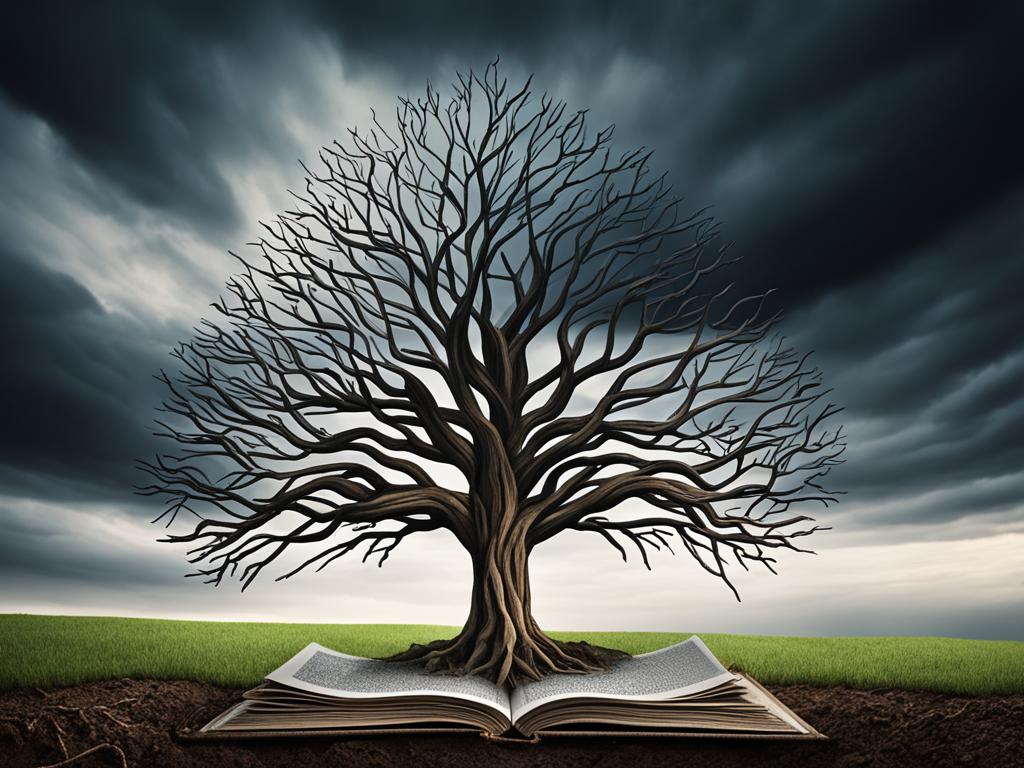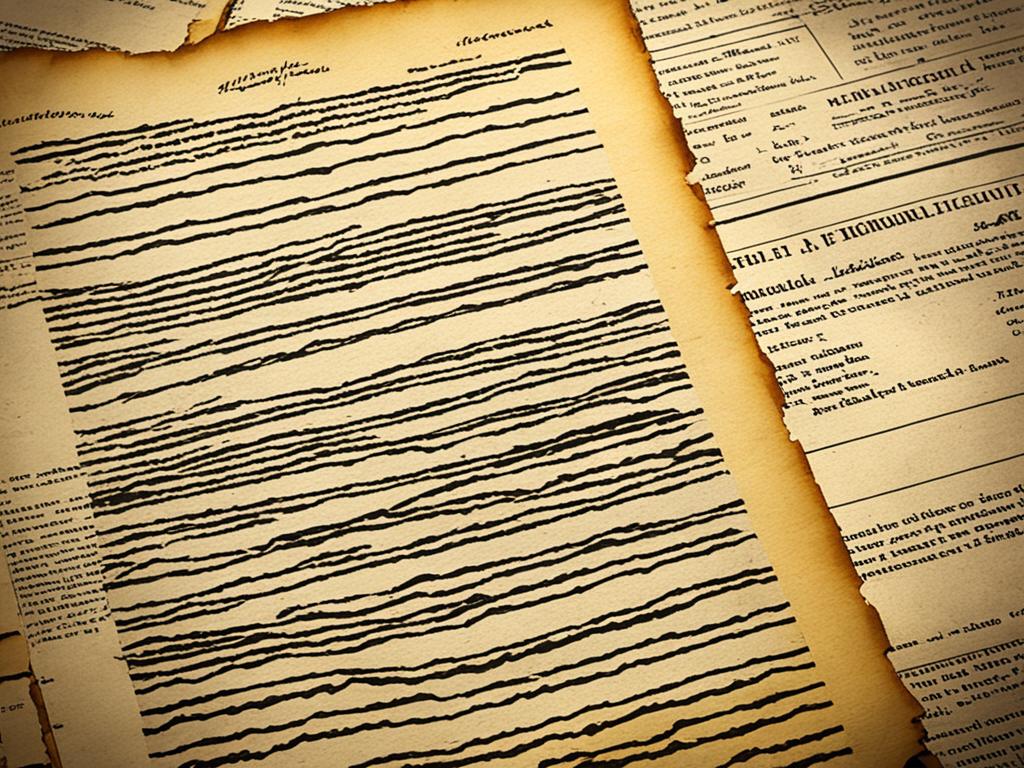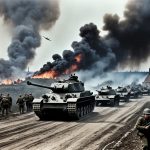Did you know six million European Jews were killed during the Holocaust? This genocide is one of history’s darkest moments. It shows the dangers of hate and antisemitism.
Many others were also brutally treated, like Roma, Sinti, LGBTQI+ people, disabled individuals, and political opponents. Nazi crimes went beyond Jews, hitting millions in World War II. Concentration camps like Dachau now serve as a reminder of this evil.
We visit these places to remember the Holocaust and learn from it. Events like Yom HaShoah remind us to say „Never Again.”
Understanding the Impact of the Holocaust
The Holocaust is a dark chapter in history. It shows us the worst of humanity. Six million Jews and millions of others lost their lives under the Nazi regime. We must remember this to learn from the past and stop such horrors from happening again.
The Nazis killed many Jewish communities in Europe. Auschwitz alone saw nearly 1.3 million people taken away, with over 1.1 million dying. Between 1940 and 1941, 70,000 disabled Austrians and Germans were also murdered.
Before the Holocaust, there were about 525,000 Jews in Germany, making up just one percent of the population. Many Jews left Germany from 1933 to 1939, but those who stayed faced terrible treatment. By 1945, around 275,000 people seen as handicapped were killed.
After World War II, many survivors moved to other countries. The United Nations helped set up camps for them. Over 170,000 Jewish refugees went to Israel after it was created in 1948. President Harry Truman also changed laws in 1945 to help more Jews come to the United States.
The Holocaust teaches us a hard lesson about hate and discrimination. It reminds us to fight against oppression and prejudice. Remembering the Holocaust helps us honour its victims and work towards a fairer world.
The Importance of Holocaust Education and Remembrance
Holocaust education is key in fighting prejudice and intolerance. Through events and educational programmes, we keep the memory of victims alive. This helps stop such tragedies from happening again. UNESCO’s 2017 guide on teaching the Holocaust shows why it’s important. It talks about how societies can be fragile and how people can be easily misled.
Learning about the Holocaust helps students understand violence and human rights. It teaches them about ethics and how to be active citizens. By adding Holocaust education to school curricula, students become better informed and critical thinkers.
Remembering the Holocaust is crucial for fighting antisemitism today. The Nuremberg Trials showed the world how to punish genocide. This links to the Convention on Genocide Prevention.
- Graphic material should be used judiciously in Holocaust education.
- Avoid comparative analyses of the level of suffering between different groups during the Holocaust.
- Carefully investigate the origin and authorship of historical material, especially online content.
- Distinctions should be made between terms such as prejudice and discrimination, armed and spiritual resistance, or concentration camps and killing centres.
- Avoid simplifying the history of the Holocaust and strive for nuanced teaching.
- Encourage students to think critically about historical events and human behaviour.
- Provide contextualisation of the Holocaust within European and contemporaneous history.
- Put emphasis on individual experiences behind statistics when teaching about the Holocaust.
Grass-root efforts in schools and communities highlight the importance of Holocaust education. Global leaders support these efforts. They aim to keep the Holocaust’s lessons alive. This helps fight antisemitism and increase global awareness.
| Key Objectives | Impact |
|---|---|
| Inform understandings of mass violence globally. | Promotes a well-rounded understanding of historical and current events. |
| Promote human rights, ethics, and civic engagement. | Encourages responsible citizenship and ethical behaviour. |
| Discuss societal contexts that enable exclusionary policies. | Helps identify and address modern-day forms of discrimination. |
Stories of Survival and Resilience
During the Holocaust, stories of survival show us the strength of the human spirit. These tales tell us how survivors overcame huge challenges. People like Ruth Gilbert, Ernest Fruehauf, Judy Kolb, and Estelle Glaser Laughlin share their stories. They tell us about the bravery of those who went through terrible times.
Ruth Gilbert’s family got fake IDs and escaped the Łódź Ghetto. This shows their strong will to survive. Ernest Fruehauf’s family went through Kristallnacht and left Germany in 1941. This shows how the Holocaust affected Jewish families far and wide.
Survival stories also talk about hope and resilience. Judy Kolb’s family went to Shanghai to avoid Nazi Germany. Estelle Glaser Laughlin’s story from the Warsaw Ghetto Uprising shows how survivors rebuilt their lives in America after the war.
Children’s stories add another layer to the Holocaust’s impact. Ernie Heimann tells us about the British Parliament’s decision to help Jewish children come to the UK. Vera Burstyn’s story from Budapest talks about the hard times during forced labour and concentration camps.
Erna Blitzer Gorman hid on a Ukrainian farm but lost her speech and mobility. Ben Goldwater’s family fought in Belgium, and Ida Paluch Kersz was separated during deportations to Auschwitz. These stories show the deep emotions of survival.
Statistics also highlight the Holocaust’s scale of suffering and resilience:
- About 130,000 Jews left Germany seeking safety over several years.
- Over 100 Jews were killed during Kristallnacht in November 1938.
- 30,000 Jewish men were put in concentration camps during Kristallnacht.
- Children aged 17 and under, mainly Jewish, were sent to England on the Kindertransport between 1938 and 1940.
Eva Clarke was born in Mauthausen concentration camp on April 29, 1945, just before it was freed by the U.S. Army. Her story shows the miracle of life in a place of death. Her parents, Anka and Bernd Nathan, were imprisoned and separated but Eva survived, adding to the survivors’ legacy.
These stories are both sad and inspiring. They remind us of human cruelty and our ability to bounce back. The „Resistance, Resilience & Hope: Holocaust Survivor Stories” podcast series shares these stories. It shows how survivors overcame adversity, bringing hope from a dark time in history.
The World Memory Project: Preserving History
The World Memory Project aims to create the biggest free online archive of information on victims and survivors of Nazi persecution. It helps restore identities and lets families find out what happened to their loved ones. The project uses the huge Holocaust documents collection of the United States Holocaust Memorial Museum. This collection has over 17 million records of people affected by the Holocaust, including Jews, Poles, Roma, Ukrainians, and political prisoners.
Since starting in February 2011, the World Memory Project has grown a lot. Ancestry.com users have indexed over 30,000 documents from the Museum. This makes the information free for everyone to see on Ancestry.com. It helps keep historical records safe and helps us understand this important time.
This project is part of a big effort to use online tools to keep the stories of Holocaust victims and survivors alive for the future. Digital tech lets us have deep conversations with 3D recordings of survivors. This makes their stories reach people all over the world. The Museum and tech companies have worked together on projects like Virtual Holocaust Memoryscapes. These projects bring back places like Bergen-Belsen and Neuengamme, keeping their memories alive.
| Key Aspect | Details |
|---|---|
| Project Launch | February 2011 |
| Indexed Documents | Over 30,000 |
| Number of Records | 17 million |
| Number of Holocaust Victims Documented | Approximately 4.8 million |
As Holocaust survivors get fewer, it’s more important than ever to save their stories and records. The World Memory Project is a key place for victims and survivors to share their stories. It makes sure future generations learn from this dark time in history.
The World Memory Project uses online tools, indexed records, and new projects to make Holocaust documents more accessible. It’s crucial for keeping historical records safe and helping families find peace.
Combating Modern Antisemitism and Hate
Antisemitism is a big problem today, with hate crimes on the rise. Remember the Neo-Nazis in Charlottesville, Virginia, with their scary chants? It was like the 1930s all over again. This shows the big challenges the Jewish community faces now.
White supremacy and antisemitism are big threats in the U.S. However, the federal government looks to understand these threats better. This helps improve how we deal with anti-Semitism.
- Enhancing awareness and understanding of antisemitism and its threats to America.
- Fostering a broader appreciation of Jewish American heritage.
- Tackling antisemitism online to counter its normalisation and prevent discrimination.
- Employing a whole-of-society approach for a united front against antisemitism.
Antisemitism is getting worse, especially in Europe. To fight this, the U.S. is taking steps like appointing special envoys and giving security help to Jewish communities. These actions are key to keeping the Jewish community safe.
But the problem isn’t just in the U.S. Denying the Holocaust and mixing antisemitism with anti-Zionism is common. We need to tackle these issues carefully. President Donald Trump spoke out strongly against the threats against Jewish places and people.
Stopping modern antisemitism and hate needs everyone’s effort. By working together, learning from each other, and standing up for everyone’s rights, we can fight these evils. Let’s work to keep the Jewish community safe and respected.
Reflection.
The Holocaust shows us the worst and best of humanity. It’s not just a part of history. It reminds us of the dangers of hate and prejudice. This section looks at how we remember and learn from the Holocaust.
In 2011, *Humanity in Action* published *Reflections on the Holocaust*. It features essays from their educational programmes from 1997 to 2010. These stories talk about the Holocaust and other genocides, showing how people fought against injustice.
The essays highlight our moral duty in democratic societies. They teach us from the Holocaust’s horrors. The book encourages us to think deeply and act bravely against injustice.
It warns us of the risks of being too easy-going and ignoring wrongs. By focusing on memorials and teaching the Holocaust, the book helps us understand history. It prepares us to face today’s and tomorrow’s injustices.
These stories urge us to act against hate and bias. The Holocaust teaches us to keep fighting against prejudice in all its forms.
FAQ
What is the Holocaust, and why is it historically significant?
The Holocaust was a time when six million Jews and others were persecuted and killed by the Nazis during World War II. It teaches us about the dangers of hate and discrimination.
When is the Holocaust remembered?
We remember the Holocaust on Yom HaShoah, or Holocaust Remembrance Day. These days help us honor the victims and prevent such events from happening again.
Why is Holocaust education important?
Learning about the Holocaust helps fight against hate and prejudice. It teaches us about the suffering it caused. This helps us promise „Never Again.”
Can you share stories of Holocaust survivors?
Yes, survivors like Ruth Cohen share their stories. They tell us about the bravery of people like Egyptian doctor Mohamed Helmy. Their stories inspire us with their strength and hope.
What’s the World Memory Project?
The World Memory Project aims to create a huge online archive of Holocaust victims and survivors. It works with the United States Holocaust Memorial Museum. This helps families find out what happened to their loved ones and keeps history alive.



